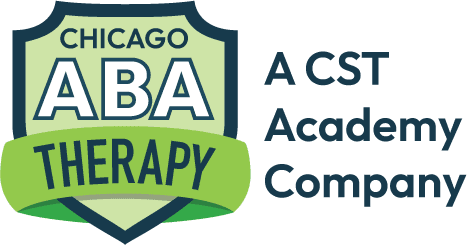An Individualized Education Program (IEP) is a legally binding document designed for students with disabilities to ensure they receive tailored educational services. It is developed through a collaborative process involving educators, parents, and specialists to address the unique needs of the child. The IEP outlines specific goals, accommodations, and the special education services required for the student to succeed in the least restrictive environment possible.
The Importance of an IEP
The IEP is crucial because it provides a structured plan that caters to the individual learning needs of students with disabilities. By customizing educational strategies, an IEP ensures that these students have access to a free appropriate public education (FAPE) as mandated by the Individuals with Disabilities Education Act (IDEA). This ensures that all students, regardless of their abilities, have the opportunity to reach their full potential.
Key Components of an IEP
An effective IEP includes several essential components, each designed to create a comprehensive educational plan:
- Current Performance Levels: This section describes the child’s current academic and functional performance, providing a baseline to measure progress.
- Annual Goals: Clearly defined, measurable goals that the student is expected to achieve within a year. These goals are tailored to the student’s needs and abilities.
- Special Education Services: Detailed information about the specific services the student will receive, such as speech therapy, occupational therapy, or behavioral support.
- Accommodations and Modifications: Specific adjustments and supports that will help the student access the general education curriculum. Examples include extended time on tests, preferential seating, or modified assignments.
- Participation with Non-Disabled Peers: An explanation of how much time the student will spend with non-disabled peers and the extent of their participation in general education activities.
- Transition Services: For students aged 16 and older, the IEP must include a plan for transitioning from school to post-secondary education, employment, and independent living.
- Progress Monitoring: A plan for how the student’s progress towards meeting annual goals will be measured and reported to parents.
The IEP Development Process
Developing an IEP involves several steps to ensure a comprehensive and individualized approach:
- Referral: The process begins with a referral for special education evaluation, which can be initiated by parents, teachers, or other professionals.
- Evaluation: A comprehensive assessment is conducted to determine the student’s eligibility for special education services. This evaluation covers academic, behavioral, and functional areas.
- IEP Meeting: If the student is found eligible, an IEP meeting is scheduled. This meeting involves a team that includes parents, teachers, school administrators, and other relevant professionals.
- Drafting the IEP: During the meeting, the team collaborates to develop the IEP, focusing on the student’s strengths, needs, and educational goals.
- Implementation: Once the IEP is finalized, it is implemented by the school. Teachers and staff are responsible for providing the specified services and accommodations.
- Review and Revision: The IEP is reviewed at least annually to assess the student’s progress and make necessary adjustments. However, parents or educators can request a review at any time if there are concerns about the student’s progress.
Parental Involvement in the IEP Process
Parents play a vital role in the IEP process. Their insights and advocacy are crucial in developing an effective plan. Here are some tips for parents to navigate the IEP process:
- Be Prepared: Gather relevant information about your child’s strengths, challenges, and any assessments or reports.
- Communicate: Maintain open communication with teachers and school staff. Share your concerns and ask questions to understand the process better.
- Stay Involved: Attend all IEP meetings and be an active participant in discussions. Your input is valuable in shaping the educational plan.
- Understand Your Rights: Familiarize yourself with your rights under IDEA and state regulations. This knowledge empowers you to advocate effectively for your child.
Benefits of an IEP
An IEP offers numerous benefits for students with disabilities:
- Customized Education: The IEP ensures that education is tailored to the student’s unique needs, promoting better learning outcomes.
- Structured Goals: Clear, measurable goals provide a roadmap for success, helping students achieve academic and personal growth.
- Access to Resources: Students receive specialized services and supports that might not be available in a general education setting.
- Legal Protection: The IEP provides legal protection to ensure that students receive the services they need and are entitled to under federal law.
Common Challenges and Solutions
Despite the benefits, there are challenges in implementing an IEP:
- Resource Limitations: Schools may face resource constraints that can affect service delivery. Solution: Advocate for necessary resources and collaborate with the school to find creative solutions.
- Communication Gaps: Miscommunication between parents and school staff can hinder progress. Solution: Establish regular communication channels and set up periodic meetings to discuss the student’s progress.
- Resistance to Change: Some educators may resist implementing IEP accommodations. Solution: Educate and collaborate with educators to highlight the importance and benefits of the IEP.
Conclusion
An Individualized Education Program (IEP) is a cornerstone of special education, ensuring that students with disabilities receive the tailored support they need to succeed academically and personally. Through collaboration, dedication, and effective communication, the IEP process can significantly enhance the educational experience for students with disabilities, paving the way for a brighter future.
By understanding the intricacies of the IEP process, parents, educators, and specialists can work together to create a supportive and inclusive educational environment. At Chicago ABA Therapy, we are committed to supporting families and educators in developing effective IEPs that cater to the unique needs of each student, ensuring they thrive both in and out of the classroom.








